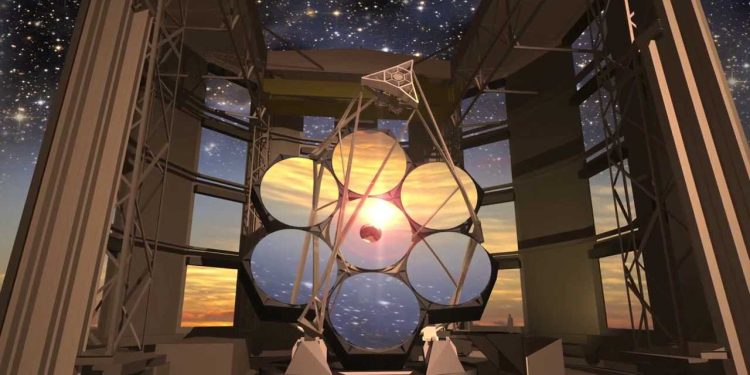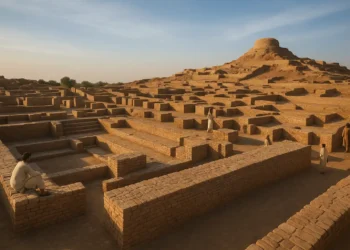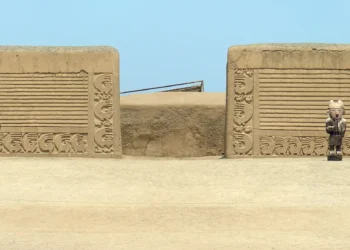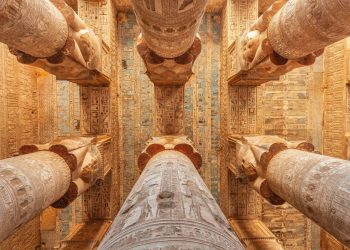The goal is kind of simple, to unveil the very secrets of the universe from a location atop the Atacama Desert in Chile. Are you ready to have your mind blown?
We wrote about this state-of-the-art telescope in 2021, but we felt we needed to publish another piece just to let people know how big of a deal this telescope really is.
A New Giant in the World of Telescopes
The James Webb Space Telescope may currently hold the title of the largest and most powerful telescope in space, but an enormous challenger awaits on the ground – the Giant Magellan Telescope (GMT). Set to become the world’s largest telescope, the Giant Magellan Telescope’s launch has been delayed until 2029, but its capabilities will be four times more powerful than Webb’s, promising groundbreaking discoveries.
A Colossal Telescope with Unrivaled Capabilities
Costing significantly less than the $10 billion James Webb telescope, the Giant Magellan Telescope boasts four times the spatial resolution of Webb, ten times that of Hubble, and 200 times more than other terrestrial telescopes. Its construction takes place on Cerro Las Campanas in Chile, south of the Atacama Desert, which also houses the VLT (the most powerful optical instrument) and ALMA (the largest radio telescope in the world).
A Prime Location for Unparalleled Observations
The Giant Magellan Telescope’s location is crucial for its success. The Atacama Desert’s night sky remains virtually free of air pollution and minimally affected by light pollution. With an estimated 300 clear-sky nights per year, it provides one of the best locations on Earth for long-term astronomical observation.
Giant Magellan Telescope Design: A Honeycomb of Mirrors
Featuring seven 8.4-meter mirrors arranged in a honeycomb pattern, the Giant Magellan Telescope will have the equivalent of a single 25.4-meter diameter mirror. This unique design enables a powerful resolution ten times greater than NASA’s Hubble Space Telescope.
Giant Magellan Telescope: A New Era in Astronomy
Astronomer Wendy Freedman declared in 2015, when the Giant Magellan Telescope project received its first $500 million in funding, that the telescope would “usher in a new era in astronomy.” The Giant Magellan Telescope aims to reveal the universe’s first light-emitting objects, explore the mysteries of dark matter and energy, and identify potentially habitable planets in our galactic neighborhood.
Capturing Light on a Grand Scale
With the ability to collect light 50 million times better than the human eye, the Giant Magellan Telescope is an engineering marvel. Housed in a 22-story building weighing 4,800 tons, the observatory’s complex optics must accommodate our planet’s atmospheric vibrations and variable density.
The Ultimate Galactic Quest
A collaboration of 13 universities and institutions worldwide, the telescope seeks to answer the question, “Are we alone in the universe?” Together, these organizations strive to uncover the galaxy’s secrets, decipher our cosmic origins, and potentially pave the way for unraveling dark matter’s mysteries.
This article has been updated to correct the following in May 2023.
• The cost of James Webb was listed as $2 billion rather than $10 billion
• The 25.4-meter mirror was listed as 24.5-meters in the article
• Light collecting ability is listed 19 million times the human eye rather than 50 million (This is a stat recently updated by the Giant Magellan Telescope team)
PLEASE READ: Have something to add? Visit Curiosmos on Facebook. Join the discussion in our mobile Telegram group. Also, follow us on Google News.











